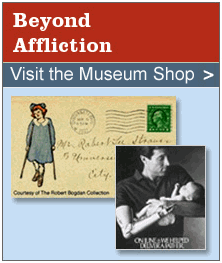Education: Essay
Minority And Difference
by Dr. Paul Longmore, San Francisco State University
(Interview, "Beyond Affliction," National Public Radio, 1998.)
People with disabilities constitute a number of related minority groups. A disability is not simply or even primarily a series of medical conditions. It is much more a social condition, and even a political condition, so that historically, and in contemporary society, the experience of disability is very much of minority status.
The term "minority" doesn't simply, or even primarily, refer to the numerical size of a group. Women are a minority, but they're the majority of the population. Minority status has to do with cultural devaluation, social marginalization, the disempowerment of members of particular groups that have been, within their societies, singled out for discriminatory treatment. They're the objects of prejudicial attitudes. These aren't simply the personal attitudes of biased individuals. These prejudices have historical roots, they're deep seated culturally, they're institutionalized in social practices and even laws and policies. People with disabilities experience a great deal of those forms of prejudices, expressed in those ways. To be disabled in American society, and in many other societies, is to be socially stigmatized, and therefore marginalized. People with disabilities are devalued, because they often look different, and almost always function in different ways from members of the majority in the society, and those differences are stigmatized and result in discriminatory treatment.
How to cite this essay in a Chicago Manual of Style footnote: Paul Longmore, “Minority And Difference,” Disability History Museum, http://www.disabilitymuseum.org/dhm/edu/essay.html?id=25 (accessed date).






